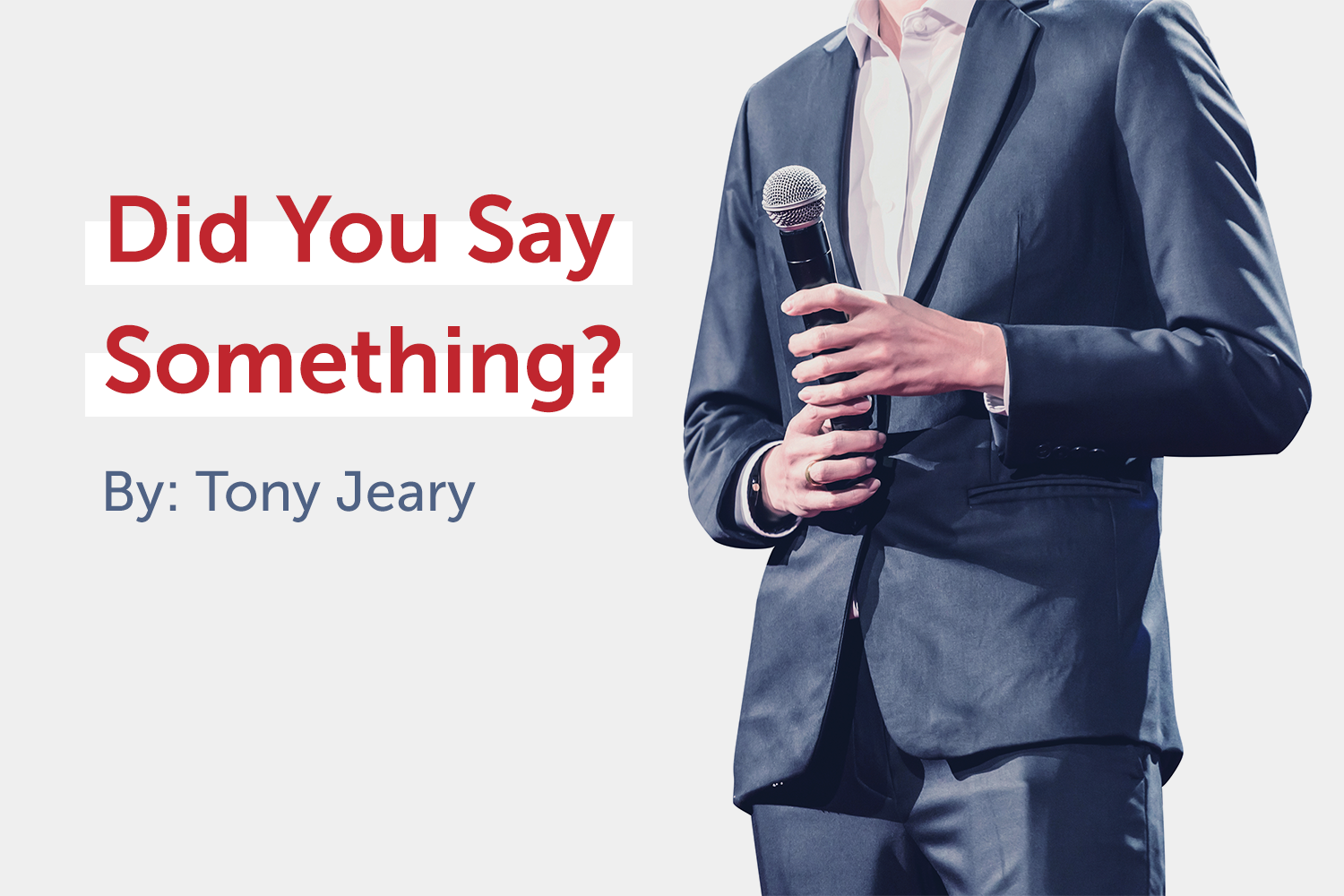
Using Sensory Acuity To Get Your Message Across
Have you ever sat through a presentation that completely bombed, leaving you and the rest of the audience asking the question, “Did you say something?” Maybe you were that presenter. I’ve been there myself—before I learned one of the most valuable communication lessons of my career:
Any time we are making a presentation— whether it’s to an audience of hundreds or a single individual—we are engaged in a two-way conversation. —Click to Tweet
Even though you, as the presenter, may be doing all (or most) of the talking, you’re still having a “conversation” with the audience. And when you have a conversation with someone, you subconsciously read cues from them—and you tailor your level of receptivity accordingly. Try this on: If you’re not “listening” to your audience, why should they bother listening to you?
Bringing All Your Senses to the Forefront
Good presenters need to consciously bring all their senses to the task at hand. We call the full employment of your senses Sensory Acuity. We don’t stop to think about it all the time, but the fact is that our entire perception of the world is a reflection of what we absorb (or have absorbed in the past) through our five senses. Even our emotional experiences and memories are bits of data stored in our brains.
Sensory Acuity is a term that comes from Neurolinguistic Programming (often referred to as NLP). I became fascinated with NLP in the mid-1980s. Since then, I’ve studied it at length, written three books of my own about it, and put it to work in my everyday life and for my clients.
My thirty-first book (I’ve now written about five dozen), a best-selling Simon & Schuster book called Life is a Series of Presentations, was endorsed by Shark Tank’s Daymond John as one of the six top must-read books in the world, right up there with Think and Grow Rich. In chapter three, we talked extensively about NLP, and about Sensory Acuity in particular, so we’ve condensed this chapter into a brief critical learning passage for you here.
Neurolinguistic Programming Break Down
- “Neuro” refers to the study of the brain and nervous system
- “Linguistic” refers to language and its characteristics
- “Programming” is the development and implementation of a strategy or plan
So Neurolinguistic Programming is a long-winded name for the study and use of language as it impacts the brain, and therefore our behavior. I really got into NLP when I began to realize the implications it had for presentation effectiveness.
(Note: While NLP has the potential to be used to manipulate an audience, I strongly believe effective presentations must come from the heart, must be genuine, and must not be manipulative. If used with a light touch, NLP can truly magnify the impact of our presentations— and magnifying impact is cool.)
6 Principles Of Neurolinguistic Programming
Here are six broad principles of NLP that I believe will help you have a greater impact with your presentations:
1. We must respect different perspectives. The various manners in which people view the world depends largely on their life experiences e.g. what they’ve read, seen, and felt. People’s world views are also impacted by their religious experiences, their formal education, by lessons taught via parents, where they’ve lived, and what kind of people/environment they’ve been exposed to. As a result of these varied experiences, different people use different frames of reference to analyze and respond to what’s going on in the world.
So, while we may not agree with the way some other people see the world, we must respect their views as having been legitimately arrived at based upon what they know and don’t know of life. If we are to communicate effectively, we must do justice to those differences, because such an understanding makes us more flexible, and therefore more effective.
Head over to Direct Selling News to read the full article titled, “Did You Say Something?“, that lists out and explains the next five principles of Neurolinguistic Programming.
Sympathize, Leverage & Connect
In many ways, NLP is nothing more than a formalized approach to sympathizing with the person to whom you are trying to communicate and then leveraging that connection to get your point across. Remember that one of the most powerful forces that act upon our receptivity to a message is the Liking Principle: We like and trust people who are like us. We will largely succeed in our presentations to the degree that we can successfully be like our audience.
We would love to help you and your team achieve Presentation Mastery. Contact us today to set up a discovery call to see how our team can help you and your company get RESULTS faster.